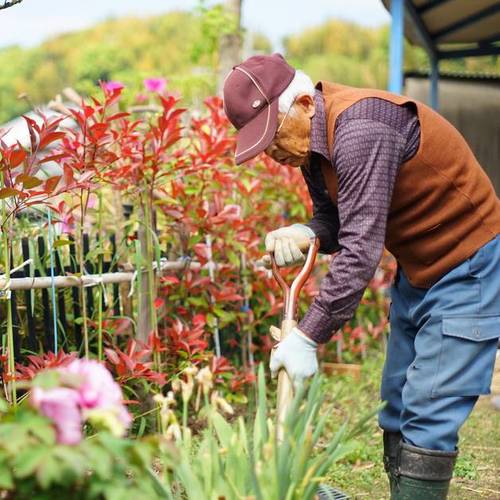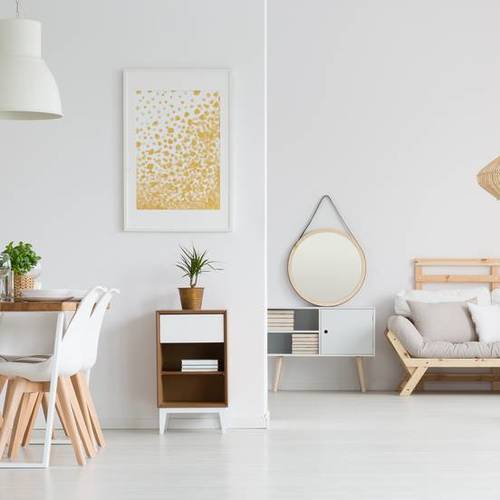new.jpg)
Here Are The Living Trends You Should Follow To Live Your Best Life
Its Friday and i'm sure work has been hectic and you are finding it hard to de-stress - Maybe it's time to make a lifestyle change check out these life trends from around the world that could bring back some Zen in your life.....
Meraki:

From: Athens
Mary Poppins said it best: “In every job that must be done, there is an element of fun. You find the fun, and the job’s a game.”
Derived from the Turkish word merak (which translates to labour of love), the Greek concept of meraki is to do things with love, passion, soul, and enthusiasm.
It’s working eagerly and taking pride in our work.
It is the idea that work — and devoting ourselves to our work with a degree of meticulousness and conscientiousness — can bring us pleasure and pride, and dedicating our soul to the task, whatever it may be, makes us happier doing it.
Perhaps meraki is what will save us from the Monday blues.
Hygge:

From: Denmark
This Scandinavian country has consistently ranked as one of the happiest countries in the world, and the answer might lie in the concept of hygge.
The hygge approach to life involves finding happiness and contentment through simple moments and simple things. Danes prioritise breaks in their daily lives to fully relax and recharge.
They mindfully take a moment to pause, spend quality time with their loved ones, or take care of themselves. Hygge, they believe, leads to lykke (happiness).
To create a hyggelig (hygge-like) atmosphere, light candles, pull up some throw blankets and snuggle up on the couch with a mug of hot chocolate. Hygge is all about simple pleasures, not chasing trends, being glued to your phone, or blind consumerism.
Niksen

From: the Netherlands
Hailing from yet another one of the happiest countries in the world, the concept of niksen is a stress-reducing practice that literally means doing nothing. This could mean doing something – anything – without a specific purpose, such as listening to music or staring out the window.
It’s about allowing yourself to be idle and letting your mind wander without feeling guilt or having any expectation.
This art of doing nothing is a way to slow down and take a breather instead of constantly thinking about your to-do list or moving from one task to another.
In our fast-paced modern society, this concept comes as a welcome reprieve from our conventional expectations about work and productivity. Instead of being “on” all the time, niksen espouses flicking the “off” switch from time to time in order to return to a state of inner peace.
Ikigai

From: Okinawa, Japan
Japanese society as a whole might not be the happiest in the world, but Okinawans seem to be doing something right. Not only are they one of the longest-living people in the world, they also seem happy and fulfilled.
And the reason for that might be ikigai, or the reason for getting up every morning. It is the Japanese counterpart to raison d’être, since iki means to live and gai means reason.
Ikigai is about living a life of meaning and finding your life’s purpose in order to be happy.
The sweet spot is where your passion, skills (what you can offer the world) and what the world needs collide.
Okinawans don’t believe in retiring – they continue to challenge themselves even after they’ve found their purpose in life, pursuing and nurturing it.
Lagom

From: Sweden
In a nutshell, lagom is all about being in the Goldilocks Zone: not too little or too much, but just right.
It encourages leading a better life by having or doing everything in moderation, and by thinking of the community instead of the individual.
Lagom is a reflection of the Swedish values of equality, fairness, teamwork, and modesty.
In practise, lagom influences every aspect of Swedish life: from furniture (think IKEA’s minimalist designs) to work-life balance to food (the tradition of fika involves having coffee twice a day with friends) to consumption (eating just enough to feel full).
To the Swedish, balance is key — and it is the key to happiness.
Lagom is not a state to achieve, but an ongoing process of being content with ourselves and others.
Instead of individual pursuits, excess and decadence, it focuses on communal values, which is also why Swedes are mindful of their environmental footprint and being close to nature.
Wabi-Sabi

From: Japan
Another concept from the land of Zen, wabi-sabi found its roots in Zen Buddhism.
Wabi is the appreciation of imperfection or irregular beauty in things, places, and moments we tend to overlook.
Sabi is about embracing the passage of time, be it in terms of damaged objects or growing old.
Wabi-sabi advocates modest living, quiet observation, and enjoying nature – rather than trying to attain perfection, particularly what the media promotes.
It’s about accepting yourself, imperfections and all, being satisfied with what you have and thus achieving peace of mind.
The wabi-sabi aesthetic is about minimalism and furniture made of natural materials such as wood. The concept also gave rise to kintsugi, the art of repairing broken pottery with powdered gold or silver, turning breakage and flaws into beauty.
The philosophy is to regard flaws as part of an object and breakage as part of its history, instead of something to disguise and conceal.
Wu Wei

From: China
This ancient Taoist principle is all about inaction. But wuwei is not about being lazy or negligent. Rather, it’s about letting go and embracing the flow.
It propounds spontaneity and effortless action rather than struggling to change one’s course of life or rushing into things one isn’t ready for.
Chinese philosopher Confucius is a well-known practitioner and advocate of this concept.
He subscribed to the belief that everything happens at the right time and our role is to just follow the natural order of things, to trust in the timing of things and not try to alter or speed up our journey.
That way, when it’s finally time for us to take action, we can be more strategic and precise, yielding more effective results.
This article was first published on September 4th, 2019, for HerWorld
Enjoyed this article let us know your thoughts comment below:
Blogs for you
Half the Sky's mission is to supply the tools that can give every woman the ability to build a successful career and be fully prepared for the future of work. So, that they can lead a healthy, prosperous and more balanced/blended lifestyle of their choosing. By building your confidence, you’re setting foundations to empower yourself and your career. The world is your oyster, and it starts with you.
Enjoyed this article let us know your thoughts in the comments below:
About half the sky
half the sky (HTS) is a career platform for women connecting you to career opportunities at companies that care. Providing you with information, tips and strategies to navigate the rapidly changing workplace.
Sign up to get career tips and job alerts directly to your inbox! Join us to shape the future of women at work together!



